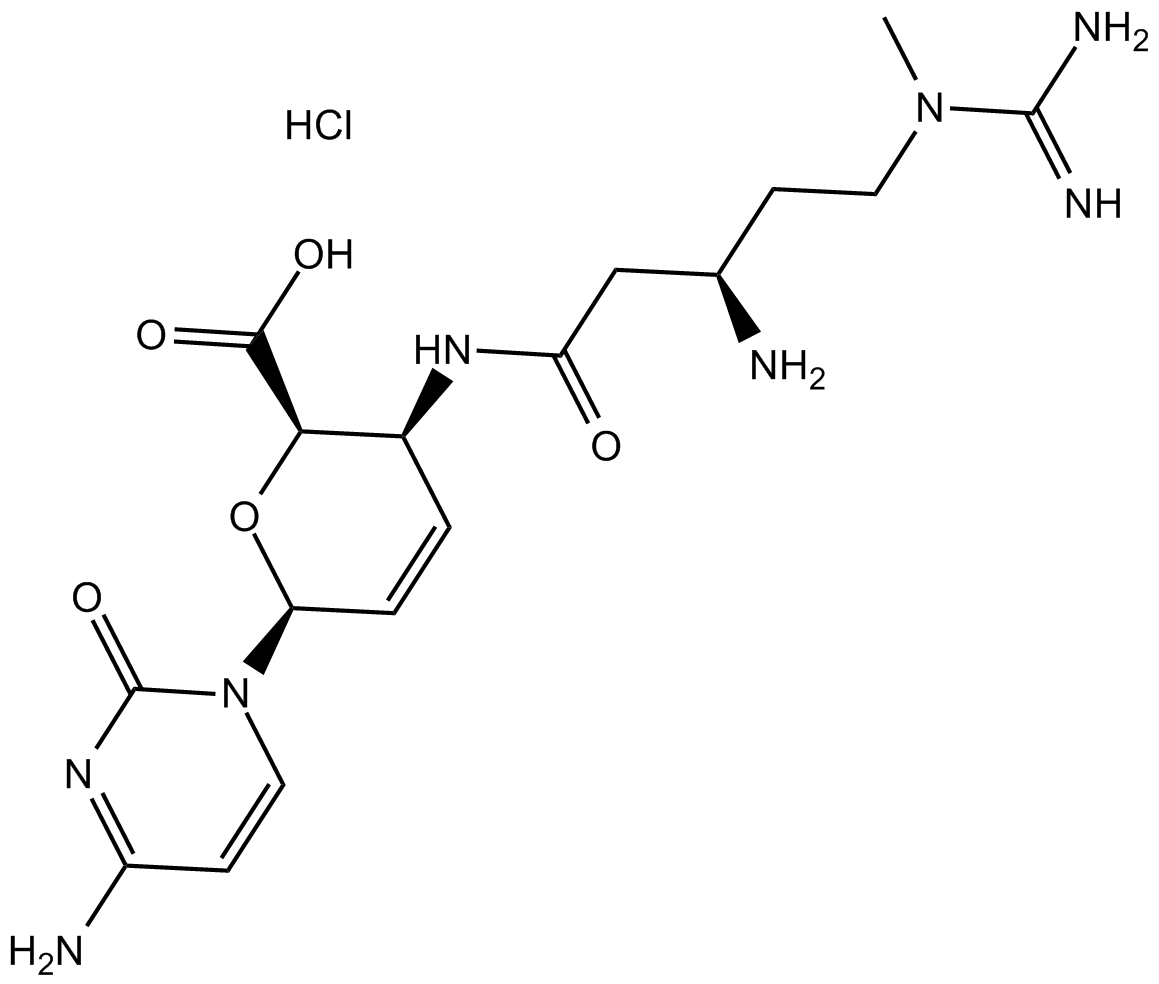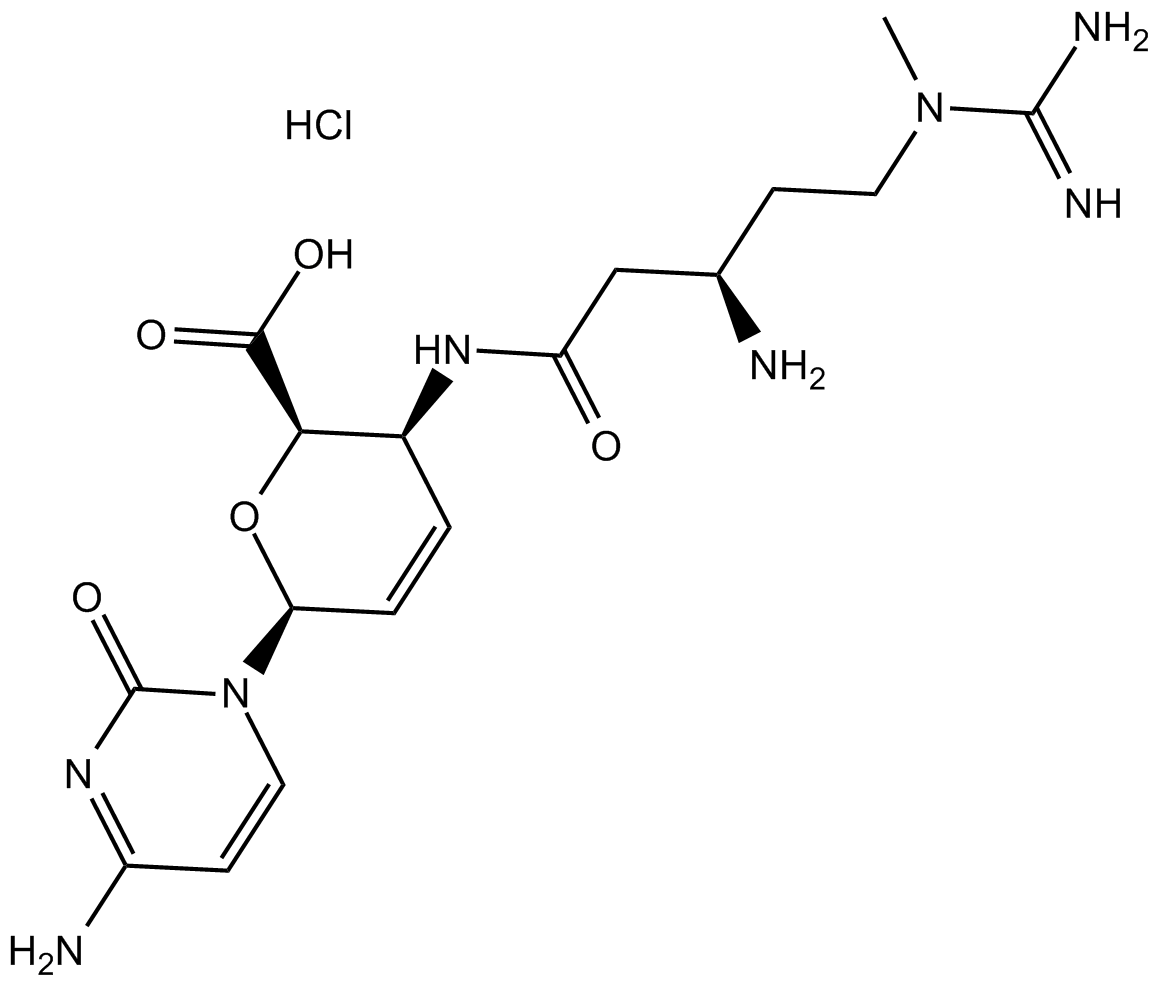Blasticidin S HCl
Blasticidin S HCl is an antibiotic isolated from the gray streptomyces (Streptomyces griseochromogenes) that works by preventing protein synthesis in prokaryotes and eukaryotes. It inhibits translation by binding to the P site of the ribosome, thereby disrupting peptide bond formation and subsequent polypeptide elongation. Blasticidin S HCl is used in biomedical research as a selective antibiotic to identify genetically engineered cells that express resistance genes. It has a rapid and potent mode of action, causing rapid cell death at very low antibiotic concentrations. Escherichia coli is typically sensitive to concentrations of 50μg/ml, while mammalian cells are sensitive to concentrations as low as 2-10µg/ml. Cell death occurs swiftly, and stable mammalian cell lines with resistance to Blasticidin S can usually be established in less than a week.
| Physical Appearance | White solid |
| Storage | Store at -20°C |
| M.Wt | 458.9 |
| Cas No. | 3513-03-9 |
| Formula | C17H27ClN8O5 |
| Solubility | insoluble in DMSO; insoluble in EtOH; ≥52.4 mg/mL in H2O |
| Chemical Name | (2S,3S,6R)-3-[[(3R)-3-amino-5-[carbamimidoyl(methyl)amino]pentanoyl]amino]-6-(4-amino-2-oxopyrimidin-1-yl)-3,6-dihydro-2H-pyran-2-carboxylic acid;hydrochloride |
| SDF | Download SDF |
| Canonical SMILES | CN(CC[C@H](CC(N[C@H]1C=C[C@H](N(C=CC(N)=N2)C2=O)O[C@@H]1C(O)=O)=O)N)C(N)=N.Cl |
| Shipping Condition | Small Molecules with Blue Ice, Modified Nucleotides with Dry Ice. |
| General tips | We do not recommend long-term storage for the solution, please use it up soon. |
| Cell experiment:[1] | |
|
Cell lines |
Mouse leukemia L5178Y cells |
|
Reaction Conditions |
20 μg/ml blasticidin S for 6 h incubation |
|
Applications |
In mouse leukemia L5178Y cells, blasticidin S resulted in a marked accumulation of monosome and ribosomal subunits, accompanied by a drastic decrease of pulse-labeled RNA (presumably mRNA) in the larger size region of polysomes. In response to a decreased protein synthesis (5 ~ 10% of the control), the appearance of pulse-labeled [3H]RNA among polysomes and monosome decreased to approximately 10% of the control when cells were treated with blasticidin S. |
|
Note |
The technical data provided above is for reference only. |
|
References: 1. Takenaka K, Endo H, Kuwano M. The synthesis and degradation of presumptive messenger RNA in cultured mouse leukemia cells during the inhibition of protein synthesis. Biochimica et Biophysica Acta, 1978, 521 (1): 295-307. |
|
Quality Control & MSDS
- View current batch:
Chemical structure









